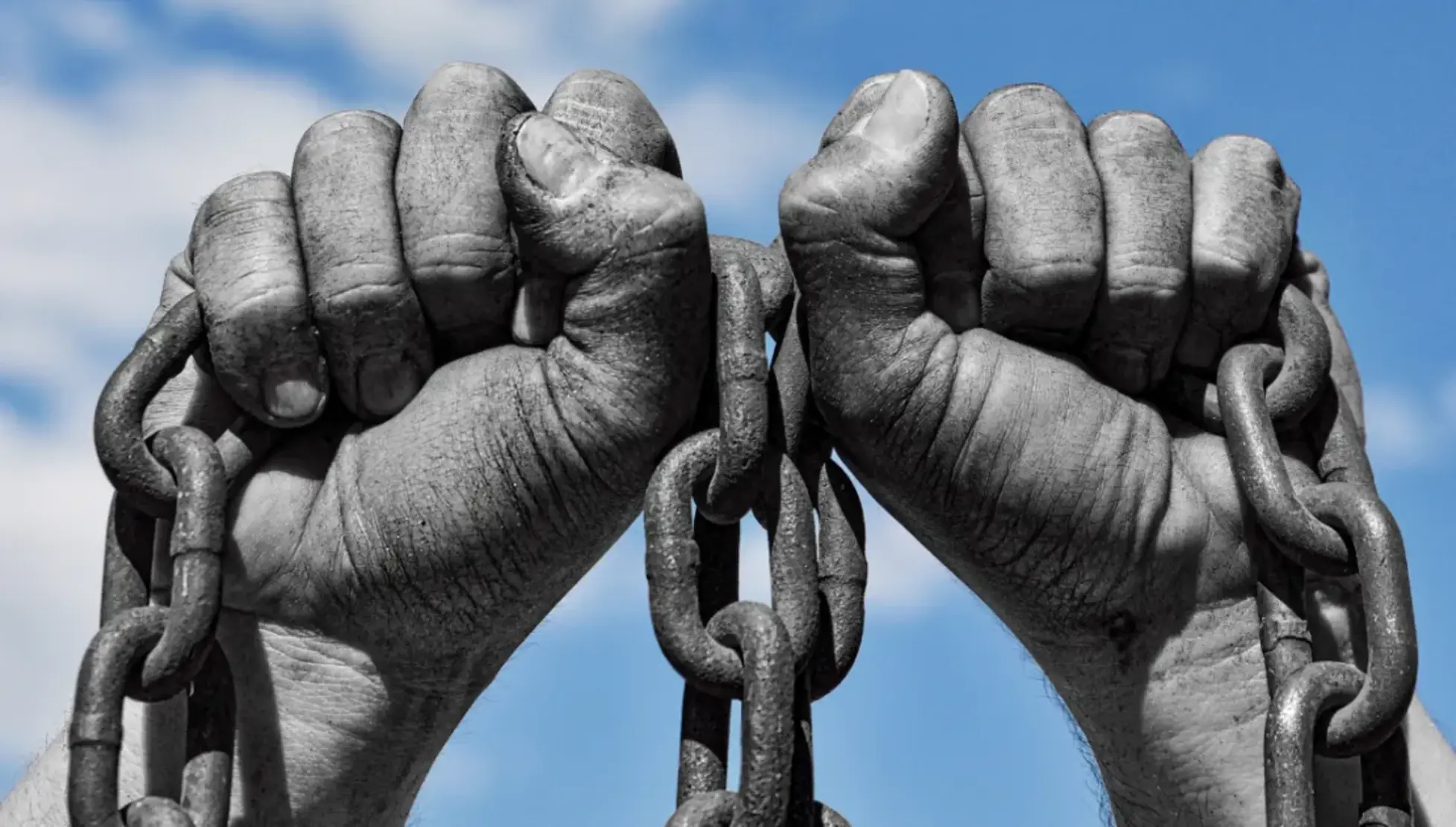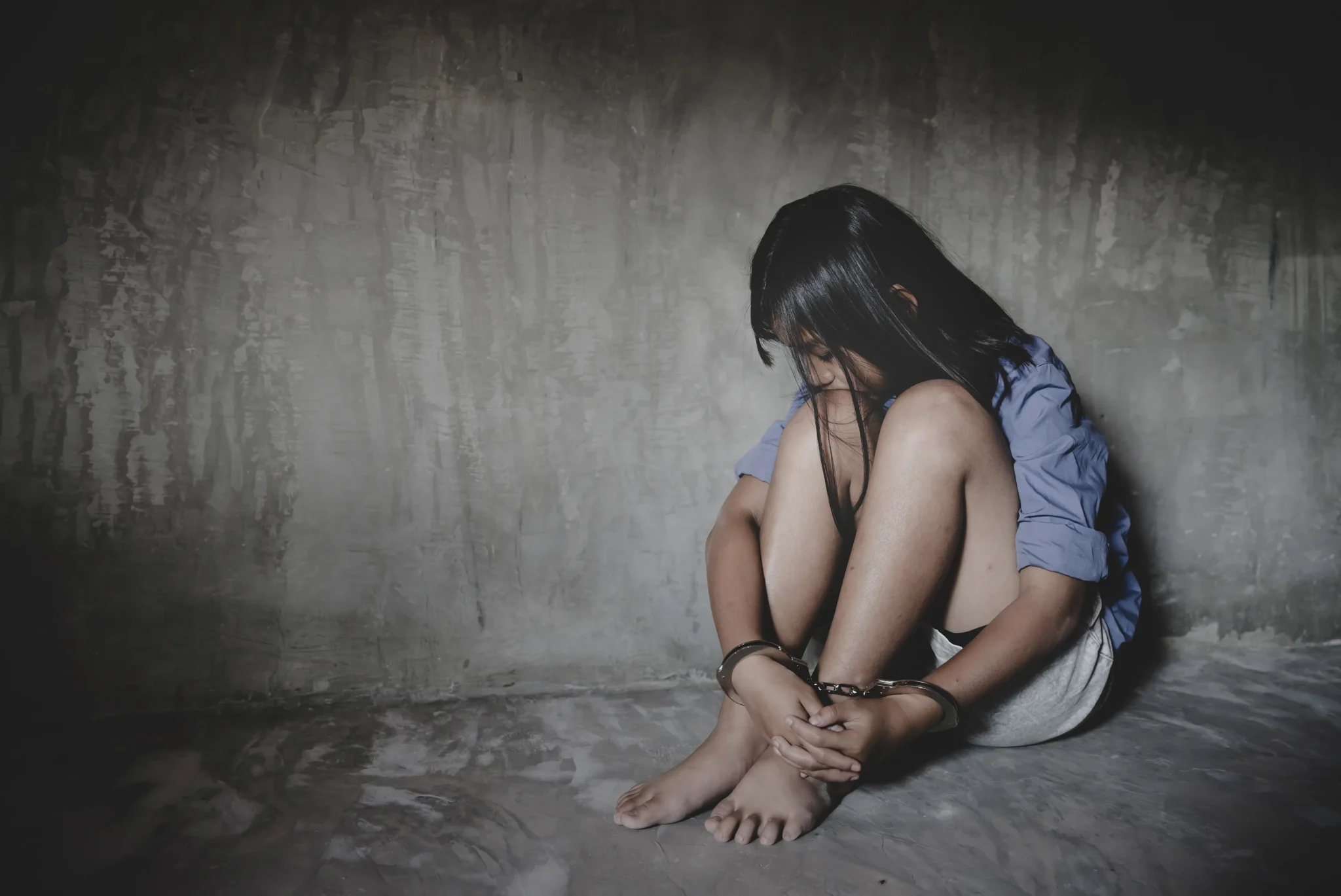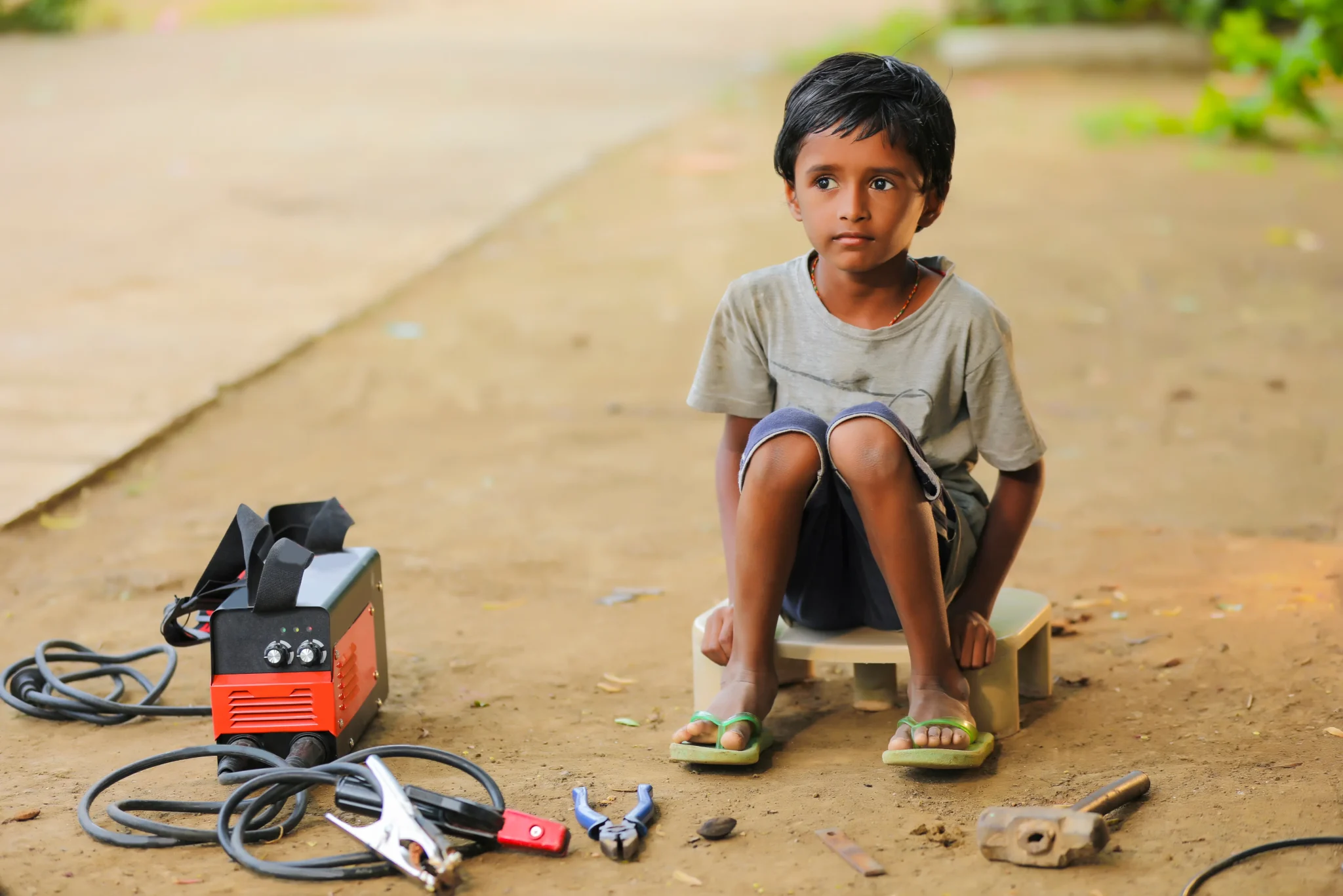Forced Labour
28 Million people in forced labour worldwide
People who are exploited for forced labour face a variety of types of coercion that compel them to work against their will.
Context
Forced labour, including child labour, is a global issue that affects people of all income levels. It entails force, threats, or exploitation, depriving people of their freedom, education, and fundamental rights. Children in forced labour frequently confront hazardous conditions in areas such as agriculture, mining, manufacturing, and household work. While upper-middle and high-income countries account for more than half of all forced labour, low-income countries have the highest rate, with 6.3 incidents per thousand inhabitants. Forced labour is still a widespread problem, fueled by poverty, inequality, and lax legal enforcement, necessitating immediate worldwide action to address its core causes and safeguard vulnerable communities.
Definition
- Work or service encompasses all sorts of work performed in any activity, industry, or sector, including the informal economy.
- Menace of any penalty refers to a variety of penalties used to force someone to work.
- Involuntariness: The terms “offered voluntarily” allude to a worker’s free and informed permission to accept a job and his or her right to depart at any moment. This is not the case when an employer or recruiter makes false promises in order to persuade a worker to choose a position that he or she would not have accepted otherwise.
- Debt Bondage: Workers are forced to work to repay debts on terms that are unclear or impossible to achieve.
- Human trafficking: It occurs when people are coercively or deceptively recruited, transferred, or harbored for the purpose of exploitation.
- Domestic servitude: Workers are forced to labor in private homes under situations that violate their rights and freedoms.
- Child Labor: Children work in jobs that are psychologically, physically, socially, or morally detrimental and interfere with their education
Forced Labour Statistics
- 27.6 million individuals, including 3.3 million children, are forced to work.
- The private sector, including industry, agriculture, and domestic employment, accounts for 86% of all occurrences of forced labour.
- Forced labour earns $150 billion in unlawful earnings each y
- Bangladesh has 4.7 million child labourers, with 1.28 million working in dangerous conditions.
- Every year, thousands of people are trafficked, with many ending up as forced labour.
- Approximately 18.7% of the population lives below the poverty line, increasing vulnerability to forced labour.
Risk Factors
- Economic Factors: Poverty, unemployment, economic inequality, and debt bondage force families to rely on child labour to survive.
- Social and Cultural Factors: Lack of education, cultural acceptance of child labour, family dynamics, and migration increase the vulnerability of children to exploitation.
- Political Factors: Weak law enforcement, corruption, and political instability allow forced child labour to persist in many regions.
- Environmental Factors: Natural disasters, rapid urbanization, and changing environmental conditions contribute to children being pushed into labour.
- Industry-Specific Factors: Industries like agriculture, mining, and textiles often exploit cheap child labour due to high demand for low-cost work.
Human Trafficking: Trafficking networks and lack of birth registration leave children susceptible to forced labour and exploitation.
Industries
- Domestic Work: Domestic employment accounts for a large share of forced labour, particularly among women and girls. Migrant labourers are often exploited due to their isolation and lack of legal protection.
- Agriculture and Fishing: Forced labour is common in agriculture and fishing, particularly in seasonal work. Workers are frequently subjected to debt bondage and unsafe working circumstances, especially in the cocoa, coffee, cotton, sugarcane, and fishing industries.
- Construction: Migrant construction workers, particularly those working on infrastructure projects, are subjected to forced labour. This includes long hours, hazardous working conditions, and underpayment, particularly in the Middle East and portions of Asia.
- Manufacturing: Forced labour in manufacturing occurs throughout worldwide supply chains, particularly in the textile, electronics, and footwear sectors. Workers frequently encounter risky conditions, extreme
- Mining and quarrying: Forced labour is prevalent in mining and quarrying, particularly in artisanal and small-scale businesses. Workers, especially children, face risky conditions while harvesting resources such as gold, diamonds, and coal.
- Sex Work & Human Trafficking: Forced labour is prevalent in the sex industry and human trafficking networks. Victims are frequently persuaded into exploitation via physical and psychological techniques.
- Hospitality and tourism: Forced labour is prevalent in the hospitality and tourism industries, with hotel and restaurant employees frequently subjected to exploitation, long hours, and low compensation, particularly among illegal workers.
- Forestry and Logging: Illegal logging and exploitation in the forestry and logging industries can entail forced labour. Workers frequently endure perilous conditions and are subjected to physical coercion in isolated locations.
International Labour Standards on Forced Labour
Convention No. 29, in Article 2(2), also provides for exceptions to the definition of forced labour by specifically referring to five situations in which compulsory labour may be imposed:
- work of a purely military character exacted in virtue of compulsory military service;
- normal civic obligations;
- work or service exacted from any person as a consequence of a conviction in a court of law, carried out under the supervision of a public authority;
- work exacted in cases of emergency, such as wars or natural calamities; and
- minor communal services in the direct interest of the community involved.
Each of these exceptions is subject to the observance of certain conditions that define their limits. If these limits are not respected, this can amount to a situation of compulsory labour imposed by the State.
The Abolition of Forced Labour Convention No. 105 adopted by the ILO in 1957 primarily concerns forced labour imposed by state authorities. It prohibits specifically the use of forced labour:
- as punishment for the expression of political views,
- for the purposes of economic development,
- as a means of labour discipline,
- as a punishment for participation in strikes,
- as a means of racial, religious or other discrimination.
“Forced labour”, “human trafficking” (also called “trafficking in persons”) and “slavery” are terms that are often used interchangeably. However, while these concepts do have significant overlap, they are conceptually distinct and each has a clear definition in international law.
What is trafficking in persons?
The definition of trafficking in persons, provided by the United Nations Protocol to Prevent, Suppress and Punish Trafficking in Persons Especially Women and Children, supplementing the United Nations Convention against Transnational Organized Crime, 2000 (UN Protocol), in Article 3(a), encompasses three elements:
- Acts: Recruitment, transportation, transfer, harbouring or receipt of persons.
- Means: The means that are used to accomplish one of the prohibited acts; namely, the use of threat or of force or other forms of coercion, of abduction, of fraud, of deception, of the abuse of power or of a position of vulnerability or of the giving or receiving of payments or benefits to achieve the consent of a person having control over another person.
- Purpose: Whether this act, using the above means, was conducted for the purpose of exploitation. The UN Protocol provides that “exploitation” includes “at a minimum, the exploitation of the prostitution of others or other forms of sexual exploitation, forced labour or services, slavery or practices similar to slavery, servitude or the removal of organs”.
What is slavery?
“Slavery” is defined under Article 1(1) of the League of Nations Convention to Suppress the Slave Trade and Slavery (the Slavery Convention), 1926, as “the status or condition of a person over whom any or all of the powers attaching to the right of ownership are exercised”. Slavery is an institution of complete ownership, in which an individual is subjected to the full control of the slave owner who can make decisions for this individual on education (attending school or not), work (type and conditions) or even private life (who to marry). The prohibition of slavery in international law has achieved “jus cogens” status, meaning that all states accept it as a principle that cannot be derogated from. Nevertheless, and although slavery is prohibited by law in most countries, the practice or its vestiges remain in certain countries. In most cases, people subjected to slavery will find themselves in a situation of psychological, economic and social dependence. They have no option than work for their “master” and will fall under the definition of forced labour provided by the Convention No. 29.
Based on the definitions provided by the related international treaties, there is a significant overlap between forced labour, human trafficking and slavery. It is important for stakeholders involved in developing and implementing NAPs to understand these concepts and their precise scope.

FAQ on Forced Labour
Forced labour and slavery are not a thing of the past. They have ancient roots in history and still exist today in many different forms. In fact, there are more people in slavery today than at any other time in history. Almost 50 million people around the world were victims of modern slavery in 2021, including about 28 million in forced labour, and 22 million in forced marriages. If they all lived together in a single city, it would be one of the biggest cities in the world.
Forced labour has grown in recent years. A simple comparison with the previous estimates indicates an increase of 2.7 million in the number people in forced labour between 2016 and 2021, which translates to a rise in the prevalence of forced labour from 3.4 to 3.5 per thousand people in the world.
Forced labour affects in one way or another every country in the world; it is a truly global problem. Statistics on prevalence are highly significant since they indicate the level of risk that people face in different regions.
Asia and the Pacific is host to more than half of the global total (15.1 million), followed by Europe and Central Asia (4.1 million), Africa (3.8 million), the Americas (3.6 million), and the Arab States (0.9 million). But this regional ranking changes considerably when forced labour is expressed as a proportion of the population. By this measure, forced labour is highest in the Arab States (5.3 per thousand people), followed by Europe and Central Asia (4.4 per thousand), the Americas and Asia and the Pacific (both at 3.5 per thousand), and Africa (2.9 per thousand).
Forced labour affects all population groups, young and old, male and female. But some groups are more vulnerable than others.
Women and girls in forced labour are much more likely than their male counterparts to be in domestic work, while men in forced labour are much more likely to be in the construction sector. Women are more likely to be coerced through wage non-payment and abuse of vulnerability, and men through threats of violence and financial penalties. Women are also more likely than men to be subjected to physical and sexual violence and threats against family members.
Migrant workers face a higher risk of forced labour than other workers. The forced labour prevalence of adult migrant workers is more than three times higher than that of adult non-migrant workers. This figure makes clear that when migrant workers are not protected by law or are unable to exercise their rights, migration is irregular or poorly governed, or where recruitment practices are unfair or unethical, migration can lead to situations of vulnerability to forced labour.
Most forced labour occurs in the private economy. Eighty-six per cent of forced labour cases are imposed by private actors – 63 per cent in the private economy in sectors other than commercial sexual exploitation and 23 per cent in forced commercial sexual exploitation. State-imposed forced labour accounts for the remaining 14 per cent of people in forced labour.
Forced labour affects everyone. Even if you’re not a victim of forced labour, you’re still affected by it. Businesses, for example, face unfair competition from unscrupulous companies who reap the profits of forced labour. That may put pressure on them to lower wages or cut benefits. Meanwhile governments lose out on precious tax revenue while facing huge legal costs from prosecuting forced labour cases – money which could be spent on education, healthcare or social protection.
Forced labour affects everyone. Even if you’re not a victim of forced labour, you’re still affected by it. Businesses, for example, face unfair competition from unscrupulous companies who reap the profits of forced labour. That may put pressure on them to lower wages or cut benefits. Meanwhile governments lose out on precious tax revenue while facing huge legal costs from prosecuting forced labour cases – money which could be spent on education, healthcare or social protection.
Want to know the situation of forced labour in your country? Check its dedicated profile on the Forced Labour Observatory.




